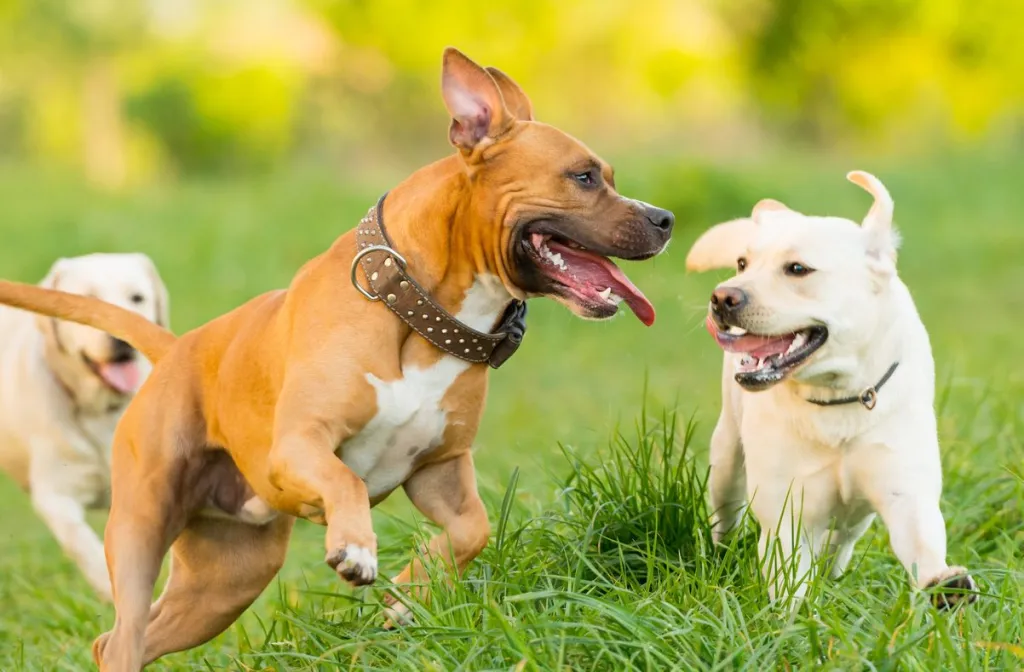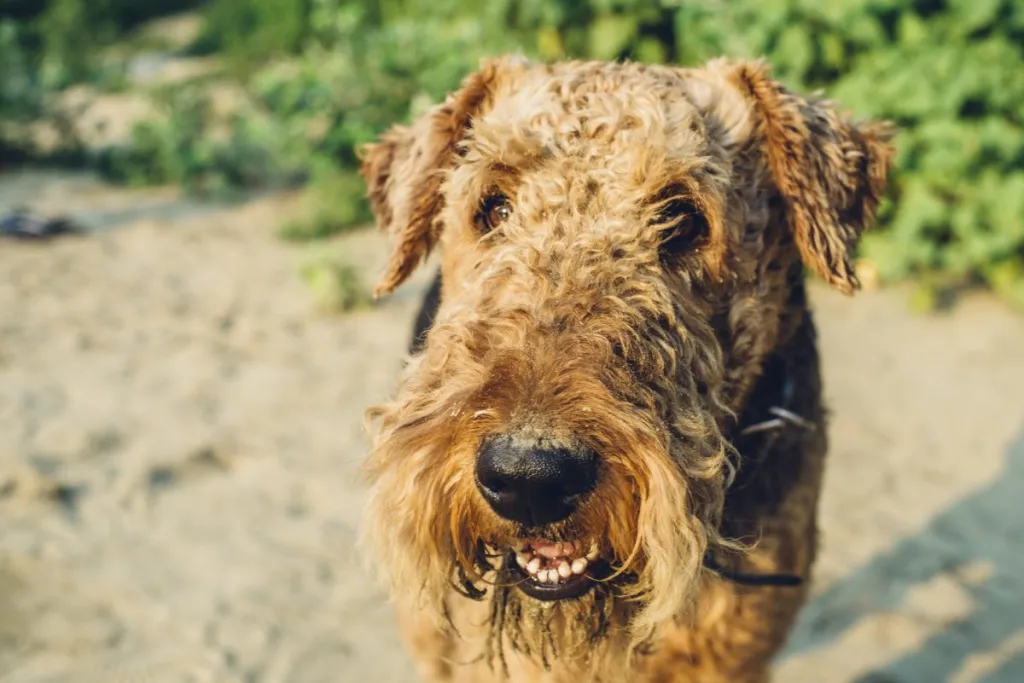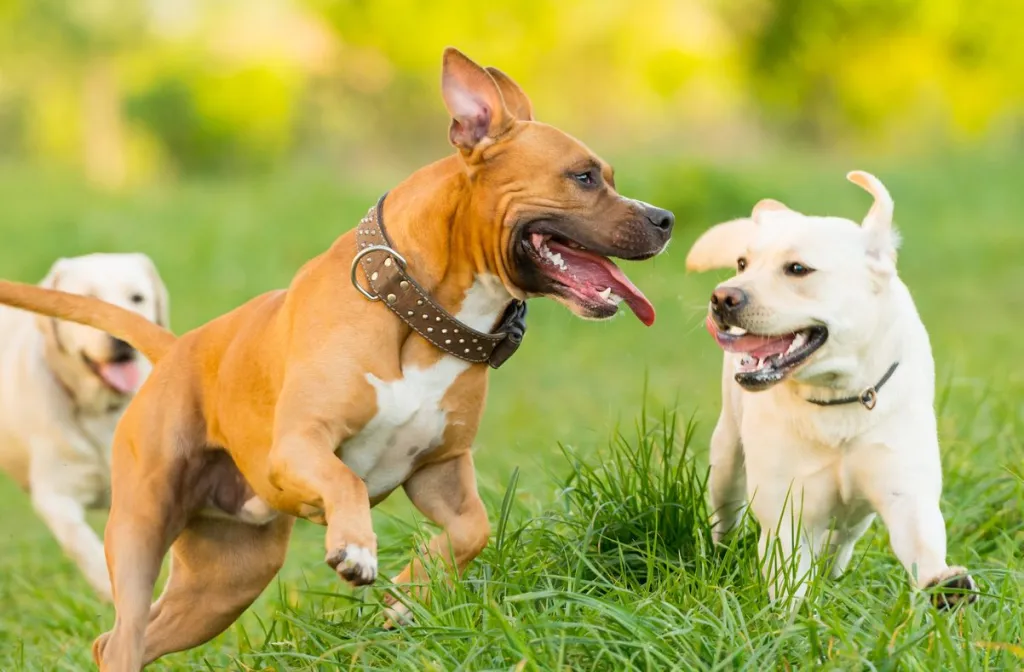
Akita
The Akita is a large, powerful dog breed that originated in Japan. They are known for their loyalty, courage, and independence. Akitas are typically white, brown, or brindle. They have a thick, double coat that is weather-resistant. They were originally bred for hunting large game, such as bears and boars. Akitas were also used as guard dogs and were prized for their loyalty and courage.
When considering an adult or Akita puppy, it’s advisable to prioritize adopting from rescue organizations or shelters to provide a loving home to a dog in need. However, if you decide to purchase, it’s crucial to choose a reputable breeder. Conduct thorough research to ensure that the breeder follows ethical practices and prioritizes the well-being of their dogs. Reputable Akita breeders prioritize the health and temperament of their dogs, conduct necessary health screenings, and provide a nurturing environment for the puppies. This active approach ensures that you bring home a healthy and happy pup while discouraging unethical breeding practices.
Reading: Akita
Quick Facts
- Origin: Japan
- Size: Large
- Breed Group: Working
- Lifespan: 10-15 years
- Coat: Thick double coat, can be short or long-haired
- Temperament: Loyal, dignified, and reserved with strangers; affectionate and protective with family
- Exercise Needs: Moderate exercise requirements, regular walks and playtime are essential
- Training: Requires early socialization and consistent, firm training due to their independent nature
- Grooming: Regular brushing and occasional grooming to maintain the coat’s health and appearance
- Health: Prone to certain health issues, including hip dysplasia, autoimmune disorders, and certain genetic conditions like progressive retinal atrophy (PRA)

Massive 3D Akita Projected Over Tokyo Streets

Celeb Pets: Henry Cavill Does Press With His Beloved American Akita, Kal, By His Side
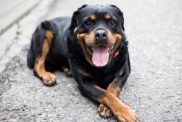
The Most Courageous Dog Breeds

How to Deal With Fearfulness in Dogs
Akita Pictures
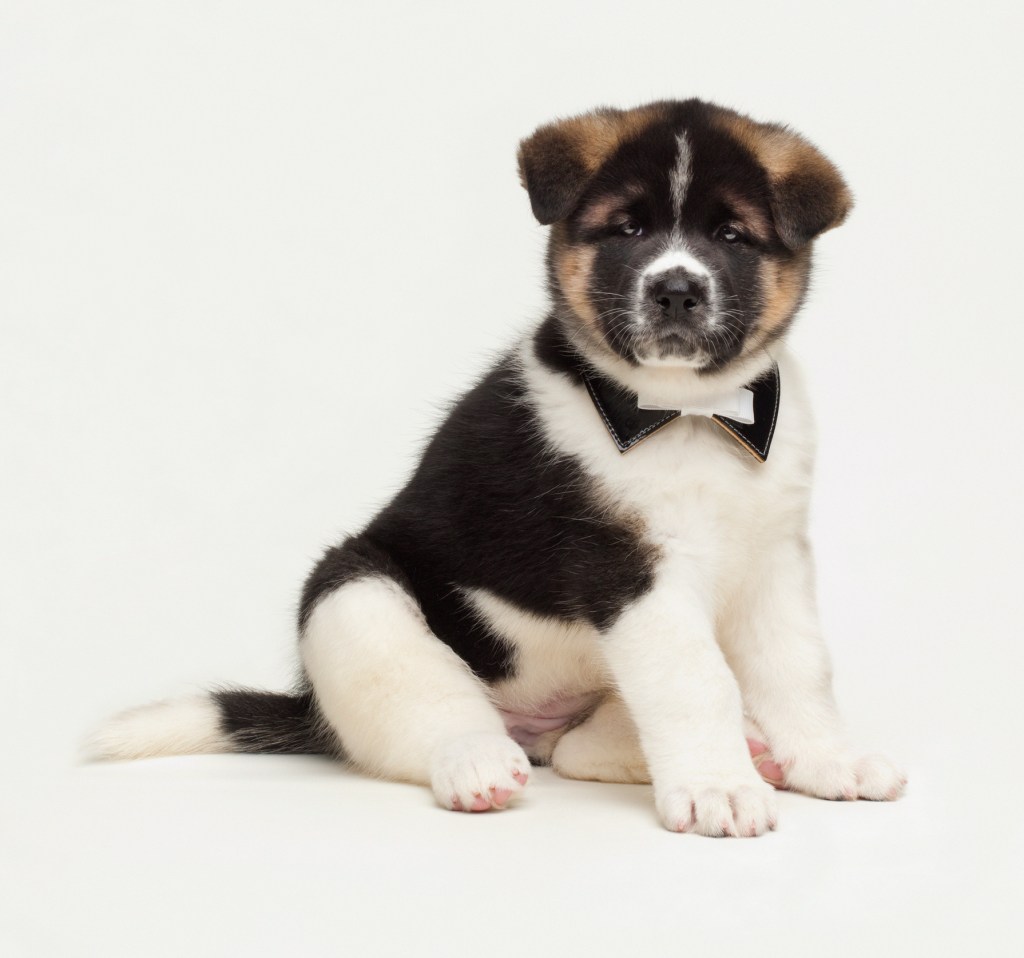
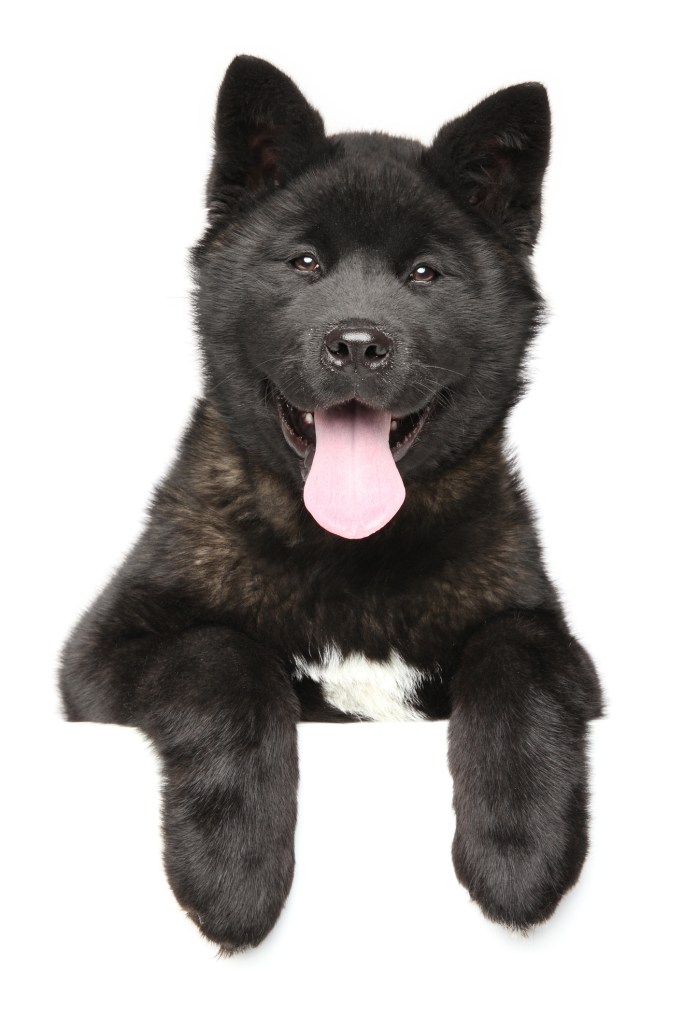
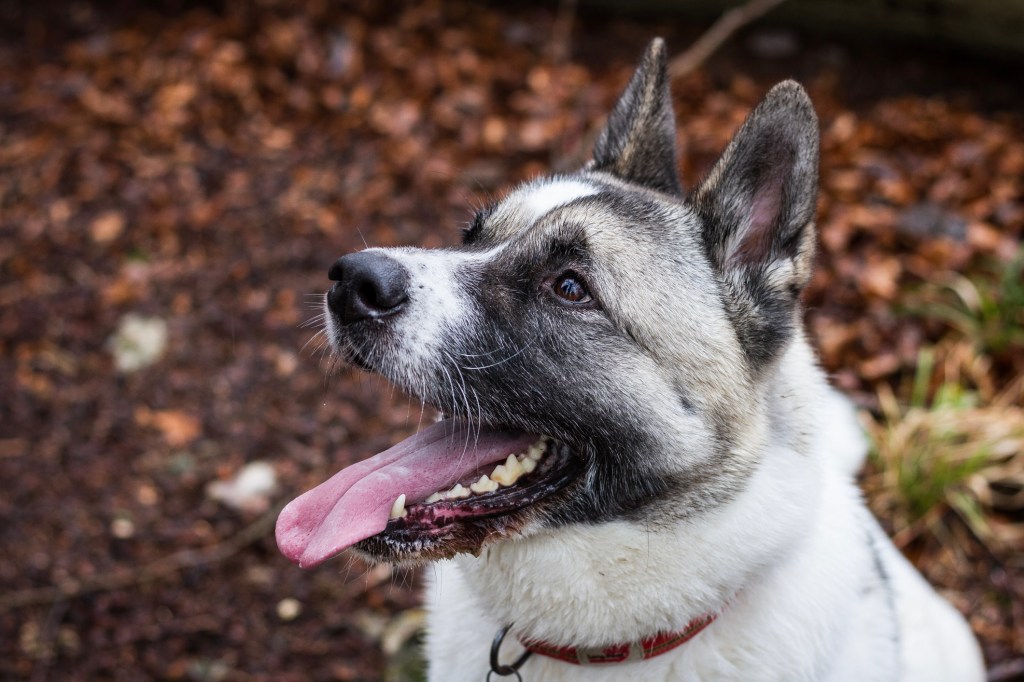
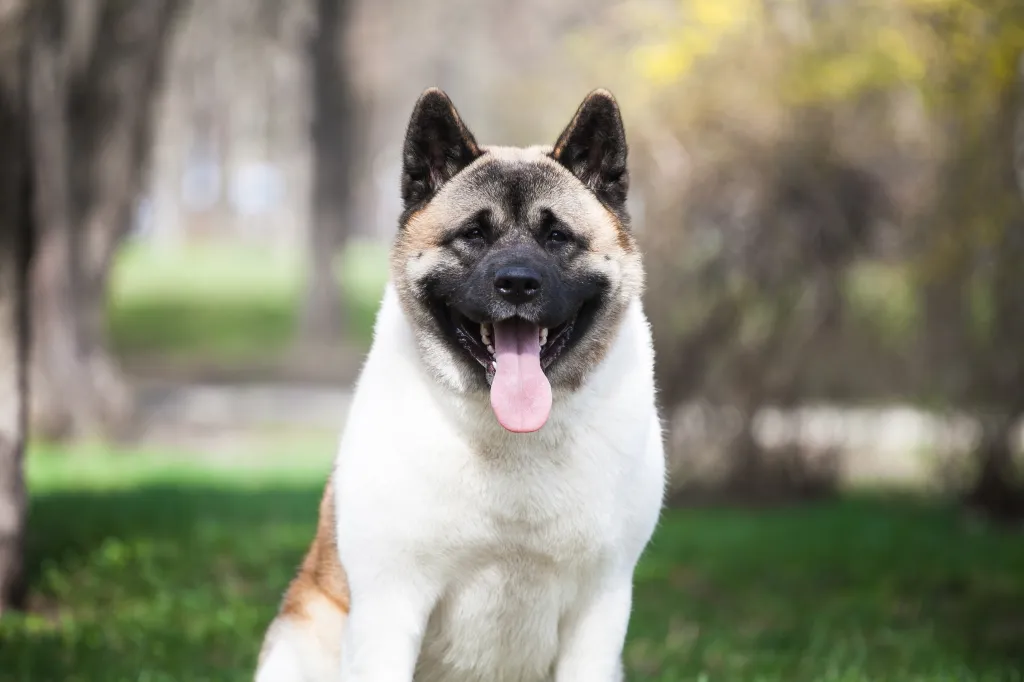


Adaptability
-
Adapts Well To Apartment Living
Looking for the best dog for your apartment? Contrary to popular belief, the suitability of dogs who adapt well to apartment living goes beyond its size. Apartment dwellers have a myriad of dog breeds to choose from as potential companions, with various factors to consider. Some large breeds can adapt well to apartment living and have lower activity levels. Others may require more space and possess higher energy levels. On the other hand, certain small dog breeds with abundant energy can still find contentment with indoor playtime or brisk walks.
However, when selecting a dog that adapts well apartments, it is essential to prioritize your neighbors. Opting for a pet that doesn’t excessively bark and behaves politely when encountering others in shared spaces like is crucial for maintaining a harmonious apartment environment.
In high-rise settings, it’s worth noting that numerous small dogs may exhibit a propensity for high energy and frequent barking. This makes them less suitable for apartment living. Therefore, desirable qualities in an apartment dog encompass being quiet, low-energy, and displaying polite behavior towards other residents.
Factors To Consider When Choosing A Dog For An Apartment
When considering dogs that adapt well to apartments, size alone should not be the sole determinant. Apartment dwellers have a wealth of dog breeds to choose from as potential furry companions. It’s important to remember that the size of your living space is just one factor to consider. While some larger breeds can adapt well to apartment living, with lower, others may require more space and have higher energy levels, making them less suitable for smaller apartments. Conversely, certain small dog breeds with higher energy levels can still thrive in apartments, finding contentment through indoor playtime or brisk walks. However, it is crucial to consider your neighbors’ comfort when selecting a dog. Opt for a pet that doesn’t bark excessively and behaves politely when interacting with others in shared spaces.
Therefore, it’s important to prioritize qualities such as being quiet, low-energy, calm indoors, and exhibiting good manners when living in close proximity to other residents. By considering these factors, you can find a dog that will adapt well to apartment living and create a harmonious living environment for everyone involved.
- Dogs Not Well Suited to Apartment Living
Read more : Chesapeake Bay Retriever
Click here for more information on this characteristic
-
Good For Novice Owners
Some dogs are simply easier than others; they take to training better and are fairly easygoing. They’re also resilient enough to bounce back from your mistakes or inconsistencies.
Dogs who are highly sensitive, independent thinking, or assertive may be harder for a first-time dog parent to manage. You’ll get your best match if you take your dog-owning experience into account as you choose your new pooch.
If you’re new to dog parenting, take a look at 101 Dog Tricks and read up on how to train your dog!
- See Dogs Who Are Good For Experienced Owners
Read more : Chesapeake Bay Retriever
Click here for more information on this characteristic
-
Sensitivity Level
Some dogs will let a stern reprimand roll off their backs, while others take even a dirty look to heart. Low-sensitivity dogs, also called “easygoing,” “tolerant,” “resilient,” and even “thick-skinned,” can better handle a noisy, chaotic household, a louder or more assertive owner, and an inconsistent or variable routine. Do you have young kids, throw lots of dinner parties, play in a garage band, or lead a hectic life? Go with a low-sensitivity dog.
- See Dogs Who Have Low Sensitivity Levels
Read more : Chesapeake Bay Retriever
Click here for more information on this characteristic
-
Tolerates Being Alone
Some breeds bond very closely with their family and are more prone to worry or even panic when left alone by their owner. An anxious dog can be very destructive–barking, whining, chewing, and otherwise causing mayhem. These breeds do best when a family member is home during the day or if you can take the dog to work.
- See Dogs Poorly Suited To Be Alone
Read more : Chesapeake Bay Retriever
Click here for more information on this characteristic
-
Tolerates Cold Weather
Breeds with very short coats and little or no undercoat or body fat, such as Greyhounds, are vulnerable to the cold. Dogs with a low cold tolerance need to live inside in cool climates and should have a jacket or sweater for chilly walks. You can find a great jacket for your dog here!
- Click here to see Dogs Poorly Suited For Cold Weather
Read more : Chesapeake Bay Retriever
Click here for more information on this characteristic
-
Tolerates Hot Weather
Dogs with thick, double coats are more vulnerable to overheating. So are breeds with short noses, like Bulldogs or Pugs, since they can’t pant as well to cool themselves off. If you want a heat-sensitive breed, your dog will need to stay indoors with you on warm or humid days, and you’ll need to be extra cautious about exercising your dog in the heat.
- See Dogs Poorly Suited For Hot Weather
Read more : Chesapeake Bay Retriever
Click here for more information on this characteristic
All-around friendliness
-
Affectionate With Family
When it comes to unconditional love and unwavering loyalty, few animals can rival the affectionate nature of dogs. These remarkable creatures have earned their reputation as man’s best friend, and it’s no wonder! Many breeds are particularly renowned for their love and devotion to their families. With their warm hearts and wagging tails, affectionate family dogs enrich the lives of their owners in countless ways.
While we like to think that all dogs are creatures of love, some breeds may be more outwardly affectionate than others. Some of this is due to temperament, breed group, and purpose. For example, dogs first bred for working or guarding independently of their human companions may show less affection than dogs specifically bred to be companion animals. Of course, this is no indication of the bond between a human and pup, but rather related to temperament and breed origin.
Affection may be demonstrated through a myriad of heartwarming behaviors. This may including tail-wagging greetings, cuddles on the couch, and an ever-present eagerness to be by their family’s side. This devotion extends to both adults and children, making dogs wonderful additions to family households. The warmth of a dog’s affection not only provides emotional support but also creates an environment of joy and connection within the family, fostering a sense of togetherness.
How To Know If A Dog Is Good With Families
The affectionate nature of family dogs extends beyond play and cuddles. Dogs have a remarkable ability to sense their owner’s emotions, offering comfort and support during difficult times. Whether it’s a wagging tail after a long day at work or a sympathetic nuzzle during moments of sadness, they prove time and again that they are attuned to their family’s needs.
It is important to note that not all dogs of the same breed will be equally affectionate. Some dogs may be more independent or aloof, while others may be more clingy or demanding of attention. The best way to find out how affectionate a dog is is to meet them in person and interact with them.
See Dogs Less Affectionate with Family
Read more : Chesapeake Bay Retriever
Click here for more information on this characteristic
-
Kid-Friendly
Being gentle with children, sturdy enough to handle the heavy-handed pets and hugs they can dish out, and having a blasé attitude toward running, screaming children are all traits that make a kid-friendly dog. You may be surprised by who’s on that list: Fierce-looking Boxers are considered good with children, as are American Staffordshire Terriers (which are considered Pit Bulls). Small, delicate, and potentially snappy dogs such as Chihuahuas aren’t always so family-friendly.
- See Dogs Who Are Not Kid Friendly
**All dogs are individuals. Our ratings are generalizations, and they’re not a guarantee of how any breed or individual dog will behave. Dogs from any breed can be good with children based on their past experiences, training on how to get along with kids, and personality. No matter what the breed or breed type, all dogs have strong jaws, sharp pointy teeth, and may bite in stressful circumstances. Young children and dogs of any breed should always be supervised by an adult and never left alone together, period.
Read more : Chesapeake Bay Retriever
Click here for more information on this characteristic
-
Dog Friendly
Friendliness toward dogs and friendliness toward humans are two completely different things. Some dogs may intimidate other dogs, even if they’re love-bugs with people; others are naturally more dog friend and would rather play than fight. It’s important to note that breed isn’t the only factor when it comes to how dog-friendly your pup will be. Sure, some dogs breeds first bred for working independently may not immediately gravitate towards other dogs, but early socialization plays a lot more into how dogs will interact than their origin. Dogs who lived with their littermates and mother until at least six to eight weeks of age or who spent lots of time playing with other dogs during puppyhood are more likely to have good canine social skills.
Still, some dog-friendly breeds are more pack-oriented and naturally thrive with other dogs. Dogs with this trait typically exhibit an innate ability to get along well with other pups. Dogs with this trait may be more eager to greet new dogs, display more social behavior at places like dog parks, or more confidently allow intimate sniffs from their canine acquaintances. This quality extends beyond mere tolerance and often manifests as a genuine enjoyment of the company of fellow canines, making these dogs ideal companions for those looking to build a multi-dog household. Additionally, they’ll pair well with pet parents hoping to take their pooch on social adventures, such as going to dog park or hanging out on dog-friendly patios.
Raising a dog-friendly dog
(Photo Credit: Stefan Cristian Cioata | Getty Images) While some dog breeds are more naturally inclined to make friends with other dogs, you may choose a puppy or adult dog that needs a little help. It’s may be common knowledge that there is a small window during a puppy’s early development when they are the most adaptable in terms of how they’ll interact with other dogs. You may, however, bring home an adult dog or a rescue and not get the opportunity. Not to fear! There are still many ways to help your pooch become dog-friendly.
Socialization is always the best way to ensure your dog becomes their most friendly self. You can help by exposing your pooch to as many sights, sounds, and environments as possible. Set up doggy playdates, enroll in dog training classes, or visit the dog park. Of course, be sure to do your research on dog training methods to ensure your dog will listen to you in social settings. Confidence is key!
- See Dogs Who Are Not So Dog Friendly
Read more : Chesapeake Bay Retriever
Click here for more information on this characteristic
-
Friendly Toward Strangers
Stranger-friendly dogs will greet guests with wagging tails and nuzzles; others are shy, indifferent, or even aggressive. However, no matter what the breed, a dog who was socialized and exposed to lots of different types, ages, sizes, and shapes of people as a puppy will respond better to strangers as an adult. Remember that even friendly dogs should stay on a good, strong leash like this one in public!
- See Dogs Who Are Less Friendly To Strangers
Read more : Chesapeake Bay Retriever
Click here for more information on this characteristic
Health And Grooming Needs
-
Amount Of Shedding
When considering adding a pup into your home, you may want to consider the amount of shedding your furry companion will experience. Regardless of the dog breed, you will want to be prepared for at least some amount of pet hair on your clothing and around your house. Of course, this amount can vary greatly as shedding tendencies differ significantly among breeds. Some dogs shed continuously, especially dog breeds with heavy double-coats or long fur. Others undergo seasonal “blowouts” and some hardly shed at all.
Having a set of grooming tools at your disposal is essential for tending to your dog’s coat. Deshedding tools are excellent for eliminating excess hair that can become trapped in your dog’s fur. There are also brushes designed to gently remove dead hair without causing discomfort to your dog’s skin. Grooming gloves and bathing brushes can aid in loosening dead hair during shampooing, making it easier to brush away. Clippers and a detangling spray effectively tackle matted fur. Additionally, home tools for managing pet hair on fabric and furniture can make a big difference. Pet tape rollers, fur brooms, and specialized vacuums can eliminate pet hair from carpet, clothing, and even furniture.
Read more : Bernese Mountain Dog
If you’re someone who values a spotless environment, you might want to opt for a low-shedding breed. Otherwise, equip yourself with the right tools to fight the fur. Concerns about shedding shouldn’t prevent you from relishing your time at home with your dog. Establishing a consistent grooming regimen can significantly minimize the presence of loose hair in your living space and on your clothing. For additional guidance on managing dog shedding, explore our recommendations for addressing excessive shedding and designing your home with your pet (and their shedding tendencies) in mind.
Related:
How to Effectively Deal with Dog Shedding
4 Best Dog Brushes
Read more : Chesapeake Bay Retriever
Click here for more information on this characteristic
-
Drooling Potential
Drool-prone dogs may drape ropes of slobber on your arm and leave big, wet spots on your clothes when they come over to say hello. If you’ve got a laid-back attitude toward slobber, fine; but if you’re a neatnik, you may want to choose a dog who rates low in the drool department.
- See Dogs Who Are Not Big Droolers
Read more : Chesapeake Bay Retriever
Click here for more information on this characteristic
-
Easy To Groom
Some breeds are brush-and-go dogs; others require regular bathing, clipping, and other grooming just to stay clean and healthy. Consider whether you have the time and patience for a dog who needs a lot of grooming, or the money to pay someone else to do it.
- See Dogs Who Require More Grooming
Read more : Chesapeake Bay Retriever
Click here for more information on this characteristic
-
General Health
Due to poor breeding practices, some breeds are prone to certain genetic health problems, such as hip dysplasia. This doesn’t mean that every dog of that breed will develop those diseases; it just means that they’re at an increased risk.
If you’re adopting a puppy, it’s a good idea to find out which genetic illnesses are common to the breed you’re interested in. You may also want to ask if your shelter or rescue has information about the physical health of your potential pup’s parents and other relatives.
- See Dogs More Prone To Health Problems
Read more : Chesapeake Bay Retriever
Click here for more information on this characteristic
-
Potential For Weight Gain
Some breeds have hearty appetites and tend to put on weight easily. As in humans, being overweight can cause health problems in dogs. If you pick a breed that’s prone to packing on pounds, you’ll need to limit treats, make sure they get enough exercise, and measure out their daily food servings into regular meals rather than leaving food out all the time.
Ask your vet about your dog’s diet and what they recommend for feeding your pooch to keep them at a healthy weight. Weight gain can lead to other health issues or worsen problems like arthritis.
Read more : Chesapeake Bay Retriever
Click here for more information on this characteristic
-
Size
Get ready to meet the giants of the doggy world! Large dog breeds aren’t just big balls of fluff, they’re like loving, oversized teddy bears on a mission to steal your heart. Need some convincing? Let’s dive into the awesome benefits of owning one!
First things first, these pooches are a living security system! With their impressive size and thunderous barks, they’ll have any would-be intruder running for the hills. Talk about peace of mind! Plus, who needs an alarm when you’ve got a furry giant protecting your castle?
But that’s not all. Large dog breeds are all about loyalty and devotion. They’ll stick by your side through thick and thin, becoming your most dedicated bestie. Their love knows no bounds! When you have a giant fluffball showing you unconditional love, you’ll feel like the luckiest human on the planet.
Now, let’s talk about their talents. These big fellas are the ultimate working partners. With brains and brawn, they’re up for any challenge. From search and rescue missions to lending a helping paw to those in need, these dogs are superheroes in fur coats. They’ll make you proud every step of the way!
Don’t let their size fool you—these gentle giants have hearts as big as their paws. They’re incredible with kids and other pets, spreading their love like confetti. Their patience and kindness make them perfect family pets, ensuring harmony in your household.
Oh, and get ready to break a sweat! These dogs are fitness enthusiasts, and they’ll keep you on your toes. Daily walks, jogs, and play sessions will not only keep them happy and healthy but will also give you a reason to ditch the couch and join in on the fun. It’s a win-win situation!
So, if you’re ready for a dose of big love, go ahead and consider a large dog breed. They’re the best wing-dog you could ever ask for, ready to make your life a thousand times more exciting, loving, and downright awesome! Get ready for the big adventure of a lifetime!
- Medium-Sized Dogs
- Small Dogs
Read more : Chesapeake Bay Retriever
Click here for more information on this characteristic
Trainability
-
Easy To Train
Easy-to-train dogs are more adept at forming an association between a prompt (such as the word “sit”), an action (sitting), and a consequence (getting a treat) very quickly. Other dogs need more time, patience, and repetition during training.
Many breeds are intelligent but approach training with a “What’s in it for me?” attitude, in which case you’ll need to use rewards and games to teach them to want to comply with your requests.
Related:
10 Fun, Impressive Tricks You Can Teach Any Dog
Dogs Who Are Challenging To Train
Read more : Chesapeake Bay Retriever
Click here for more information on this characteristic
-
Intelligence
Dogs who were bred for jobs that require decision making, intelligence, and concentration, such as herding livestock, need to exercise their brains, just as dogs who were bred to run all day need to exercise their bodies. If they don’t get the mental stimulation they need, they’ll make their own work–usually with projects you won’t like, such as digging and chewing. Obedience training and interactive dog toys are good ways to give a dog a brain workout, as are dog sports and careers, such as agility and search and rescue.
- See Dogs Who Have Lower Intelligence
Read more : Chesapeake Bay Retriever
Click here for more information on this characteristic
-
Potential For Mouthiness
Common in most breeds during puppyhood and in Retriever breeds at all ages, mouthiness means a tendency to nip, chew, and play-bite (a soft, fairly painless bite that doesn’t puncture the skin). Mouthy dogs are more likely to use their mouths to hold or “herd” their human family members, and they need training to learn that it’s fine to gnaw on chew toys, but not on people. Mouthy breeds tend to really enjoy a game of fetch, as well as a good chew on a toy that’s been stuffed with kibble and treats.
Read more : Chesapeake Bay Retriever
Click here for more information on this characteristic
-
Prey Drive
Dogs with a high prey drive have an instinctive desire to stalk, capture, and prey upon potential food sources. Dogs who were bred to hunt, such as Terriers, have an inborn desire to chase — and sometimes kill — other animals. Anything whizzing by — such as cats, squirrels, and perhaps even cars — can trigger that instinct.
How to address a high prey drive
Off-leash adventures are too great a temptation for pups who will wander and hunt. Dogs who like to chase need to be leashed. And, even on a leash, you may experience your dog pulling on the leash to reach rodents or birds in their sight. Otherwise, these pups should be kept in a fenced area when outdoors. If your pup has a high prey drive, you’ll need a high, secure fence in your yard.
These breeds generally aren’t a good fit for homes with smaller pets that can look like prey, such as cats, hamsters, or small dogs. Breeds that were originally used for bird hunting, on the other hand, generally won’t chase, but you’ll probably have a hard time getting their attention when there are birds flying by.
Other behavioral concerns
Observing your dog’s prey drive, which is instinctual and biologically-rooted, is not the same as observing aggression. Much aggression is born of fear and anxiety, especially in the case of dog aggression toward humans.
The tendency to wander, even into oncoming traffic, can produce diasterious results for pups with predatory instincts. It can also lead to pups being bitten by snakes or attacked by other wild animals they may pursue while on the hunt.
- See Dogs Who Have Low Prey Drive
Read more : Chesapeake Bay Retriever
Click here for more information on this characteristic
-
Tendency To Bark Or Howl
Some breeds sound off more often than others. When choosing a breed, think about how often the dog vocalizes. Learn more about breeds with a tendency to bark or howl.
If you’re considering a hound, would you find their trademark howls musical or maddening? If you’re considering a watchdog, will a city full of suspicious “strangers” put your pup on permanent alert? Will the local wildlife literally drive your dog wild? Do you live in housing with noise restrictions? Do you have neighbors nearby? Then you may wish to choose a quieter dog.
- See Dogs Who Are Mostly Quiet
Read more : Chesapeake Bay Retriever
Click here for more information on this characteristic
-
Wanderlust Potential
Some breeds are more free-spirited than others. Nordic dogs such as Siberian Huskies were bred to range long distances, and given the chance, they’ll take off after anything that catches their interest. And many hounds simply must follow their noses–or that bunny that just ran across the path–even if it means leaving you behind.
- See Dogs Less Prone To Wander
Read more : Chesapeake Bay Retriever
Click here for more information on this characteristic
Exercise needs
-
Energy Level
High-energy dogs are always ready and waiting for action. Originally bred to perform a canine job of some sort, such as retrieving game for hunters or herding livestock, they have the stamina to put in a full workday. They need a significant amount of exercise and mental stimulation, and they’re more likely to spend time jumping, playing, and investigating any new sights and smells.
Low-energy dogs are the canine equivalent of a couch potato, content to doze the day away. When picking a breed, consider your own activity level and lifestyle, and think about whether you’ll find a frisky, energetic dog invigorating or annoying.
- See Dogs Who Have Low Energy
Read more : Chesapeake Bay Retriever
Click here for more information on this characteristic
-
Intensity
A vigorous dog may or may not have high energy, but everything they do, they do with vigor: they strain on the leash (until you train them not to), try to plow through obstacles, and even eats and drinks with great big gulps. These dynamos need lots of training to learn good manners, and may not be the best fit for a home with young kids or someone who’s elderly or frail. A low-vigor dog, on the other hand, has a more subdued approach to life.
- See Dogs With Low Intensity
Read more : Chesapeake Bay Retriever
Click here for more information on this characteristic
-
Exercise Needs
Some breeds do fine with a slow evening stroll around the block. Others need daily, vigorous exercise, especially those that were originally bred for physically demanding jobs, like herding or hunting.
Without enough exercise, these breeds may put on weight and vent their pent-up energy in ways you don’t like, such as barking, chewing, and digging. Breeds that need a lot of exercise are good for outdoorsy, active people, or those interested in training their dog to compete in a high-energy dog sport, such as agility.
- See Dogs Who Don’t Need Tons of Exercise
Read more : Chesapeake Bay Retriever
Click here for more information on this characteristic
-
Potential For Playfulness
Some dogs are perpetual puppies — always begging for a game — while others are more serious and sedate. Although a playful pup sounds endearing, consider how many games of fetch or tag you want to play each day, and whether you have kids or other dogs who can stand in as playmates for the dog.
- See Dogs Who Are Less Playful
Read more : Chesapeake Bay Retriever
Click here for more information on this characteristic
Akita Overview
The Akita is a big, bold dog with a distinctly powerful appearance: a large head in contrast to small, triangular eyes; and a confident, rugged stance. The mere presence of a powerful Akita serves as a deterrent to most who would cause trouble. This breed is renowned for unwavering loyalty to their owners, and they can be surprisingly sweet and affectionate with family members. Imagine a loving protector who will follow you from room to room, whose entire mission in life seems to be simply to serve you.
The Akita is courageous, a natural guardian of their family. Stubborn and willful, they won’t back down from a challenge. They don’t usually bark unless there is a good reason, but they are vocal, making amusing grunts, moans, and mumbles. Some owners say the Akita mutters under their breath and seem to be talking to themselves, while others say the Akita offers their opinion on all matters, from how to load the dishwasher to when the children should be put to bed. While these charming “talking” traits are exhibited to family, the Akita is often aloof and silent with visitors.
They’re naturally wary of strangers, though they will be welcoming enough to a house guest as long as their owners are home. Socializing the Akita puppy (or retraining an adult dog) with as much exposure to friendly people as possible can help soften the edge of their wariness, though an Akita will always be an Akita—a dignified and sober presence, not a party animal. One of the Akita’s singular traits is mouthing. The Akita loves to carry things around in their mouth, and that includes your wrist. This is not an act of aggression, but simply an Akita way of communicating with those they love.
They may lead you to their leash because they want to go for a walk, for example, or act on any number of other ideas that pop into their intelligent head. Many owners are charmed by the Akita’s mouthing, but if you find it annoying, simply give your Akita a job that involves carrying something. They would happily get the newspaper or your slippers for you, or retrieve the mail or even those keys you keep misplacing.
The Akita also proves themselves unusual with their grooming habits, licking their body like a cat. And that’s not their only “feline” trait: like a tiger, they’ll stalk their prey silently, body low to the ground. This is not a dog that will growl or bark a warning before springing into action. At 100 pounds or more, the Akita is a lot of muscular power. This is a dominating breed, and the Akita will want to dominate you. Proper training is essential, and training should be done by the owner. Because the Akita is so faithfully loyal, the bond between the owner and the dog must not be broken by boarding the dog with a trainer.
Before adopting an Akita, it is crucial to spend time researching how to train this particular breed. Akitas do not respond well to harsh training methods. If your training is respectful, the dog will, in turn, respect you. But be prepared for training to take longer than it does for other breeds. Though the Akita is highly intelligent, stubborn willfulness is a part of their personality, which can and does interfere with training. The best results come from doing plenty of homework on how to train before ever bringing an Akita home with you. This is not a breed for the timid. The willful and determined Akita is also, despite their public reserve, a very social pet who needs plenty of time with their family. They not do well as a backyard dog.
Companionship holds hands with loyalty, which is what this breed is all about. To make them live outside without benefit of family is to deny the very essence of the Akita breed. A lonely and bored Akita can become destructive and aggressive. The Akita is not recommended for first-time dog owners, for those who want a lapdog, or for those unwilling to take charge. But for owners who can and will invest time and effort in research and proper training, the reward is a fine, intelligent companion with unwavering loyalty. In addition to all other considerations, choosing an Akita means deciding which side of a controversy you want to stand on.
This controversy is “the split,” and it relates to the Japanese or American standard for the breed. The Japanese Akita is considerably smaller, both in height and mass, than the American Akita—as much as 30 or more pounds lighter. Their foxlike head is decidedly different from the broad head of the American breed. The Japanese Akita has almond-shaped eyes, while the American Akita’s eyes are triangular. A black mask is much in vogue on the American Akita but is considered a show disqualifier in Japan, where markings on the face are white. If you want your dog to compete in any American Kennel Club events, the black mask means the dog has been bred to the American standard and will be allowed to compete. In fact, in America, any color on the Akita is permitted; in Japan, only red, white, and some brindles are allowed. So wide are the differences between the types that it would seem that a split would be best for the breed. There appear to be as many strongly in favor of the split as there are those who are strongly against it.
Deciding which standard to choose should be done only after much research and is largely a matter of personal taste. The Akita’s natural hunting skills translate well to various activities. They still hunt today and are able to hold large game at bay until the hunter arrives. They can also retrieve waterfowl. They are adept at tracking, and their catlike movements make them talented in agility. Akita owners are increasingly surprising those skeptics who believe that the Akita nature prevents success in this field. While it’s true that the breed’s stubbornness can make training a challenge, Akitas and their owners are taking home ribbons as more people discover the thrill of accomplishment in working with this dog.
Akita Highlights
To get a healthy pet, never buy a puppy from a irresponsible breeder, puppy mill, or pet store. Find a rescue or shelter that will vaccinate, provide veterinary care, and require applicants to meet dogs to make sure they are a good fit for their potential forever family.
- The Akita can aggressive with other dogs and is especially prone to same-sex aggression. They’ll need socialization training to overcome these tendencies.
- The Akita is not a good choice for first-time dog owners.
- Positive socialization and consistent, firm training are essential for the Akita. If he is mishandled or mistreated, they often respond by becoming aggressive.
- The Akita will chase other pets in the house if not trained properly. The Akita sheds—a lot!
- Prolonged eye contact is considered a challenge by the Akita, and they may respond aggressively.
- Training the willful Akita can be challenging and requires understanding, experience, and patience. It’s best to work with a trainer familiar with the breed, but be sure to be involved in the training, yourself.
Akita History
The Akita is named for the province of Akita in northern Japan, where they are believed to have originated. The Akita’s known existence goes back to the 1600s, when the breed guarded Japanese royalty and was used for hunting fowl and large game (including bears). This valiant breed was introduced to America by a woman of no small stature: Helen Keller.
The Japanese held Helen Keller in high esteem and took her to Shibuyu to show her the statue of Hachiko, an Akita who achieved worldwide fame in the 1920s for his loyalty. Hachiko’s owner, a professor, returned from work each day at 3 p.m., and his devoted dog met him daily at the train station. When the professor died, loyal Hachiko continued his daily vigil until his own death a full decade later. When Helen Keller expressed her desire to have an Akita for her own, she was presented with a puppy, the first Akita brought to America. Keller was delighted with Kamikaze-go and was deeply saddened when he died of distemper at a young age.
Upon hearing this news, the Japanese government officially presented her with Kamikaze’s older brother, Kenzan-go. Keller later wrote that Kamikaze had been “an angel in fur” and that the Akita breed was “gentle, companionable, and trusty.” After World War II, returning American servicemen who had been stationed in Japan brought back more Akitas. Thomas Boyd is credited with producing the first Akita stud to sire puppies in the U.S., starting in 1956. The American Akita eventually evolved into a more robust dog than the Japanese Akita and was valued by many for this reason. Yet there were those who wanted to remain true to the Japanese standard. This split caused a decades-long battle that led to a delay in acceptance by the American Kennel Club.
Finally, in 1972, the AKC accepted the Akita Club of America, but the split is still wide today and is a matter of great concern to Akita fanciers on both sides. What is never debated is the Akita’s historical and famous combination of fearlessness and loyalty. These traits were once put to the test at the London Zoo, when a Sumatran tiger cub was orphaned. The zookeepers needed special help in raising the cub, and they chose an Akita puppy for this important task. They knew the Akita would not be frightened and could engage in play that would help the tiger cub with necessary life lessons. Moreover, the Akita’s dense fur would protect him from sharp claws, and the pup’s inherent loyalty to his playmate would provide desired companionship and protection for the bewildered, orphaned cub. The Akita served in the role successfully and “retired” from the job when the tiger reached near-adulthood. This is a dog who is truly fearless, fully confident, and will exhibit unfaltering devotion to family.
Akita Size
Males stand 26 to 28 inches and weigh 85 to 130 pounds. Females stand 24 to 26 inches and weigh 70 to 110 pounds.
Akita Personality
The Akita is a bold and willful dog, naturally wary of strangers but extremely loyal to their family. They are alert, intelligent, and courageous. They tend to be aggressive toward other dogs, especially those of the same sex. They are best suited to a one-dog household. With family, the Akita is affectionate and playful. They enjoy the companionship of their family and want to participate in daily activities.
They’re mouthy and enjoy carrying toys and household items around. Despite the common belief that they never bark, they are in fact noisy, known to grumble, moan—and, yes, bark if they believe the situation warrants it. Be aware, the Akita’s strong personality can be overwhelming. They are not the dog for a first-time owner, and they are not for the timid. They need an owner who can provide firm, loving discipline.
Activity is essential for this active breed. They need plenty of exercise to keep them from becoming bored and, in turn, destructive. The naturally protective Akita has a propensity to become aggressive if allowed, or if they aren’t raised properly. Training the Akita is essential, and so is proper socialization from an early age. Keep in mind that this breed is stubborn, so extra patience is necessary to teach them proper canine manners.
Akita Health
Akitas are generally healthy, but like all breeds of dogs, they’re prone to certain conditions and diseases.
- Hip dysplasia is an inherited condition in which the thighbone doesn’t fit snugly into the hip joint. Some dogs show pain and lameness on one or both rear legs, but others don’t display outward signs of discomfort. (X-ray screening is the most certain way to diagnose the problem.) Either way, arthritis can develop as the dog ages. Dogs with hip dysplasia should not be bred. Reputable breeders offer proof that the parents have been tested for hip dysplasia and are free of problems.
- Gastric dilatation-volvulus, commonly called bloat, is a life-threatening condition that affects large, deep-chested dogs like Akitas. It is especially a problem if they eat one large meal a day, eat rapidly, drink large volumes of water after eating, and exercise vigorously after eating. Bloat occurs when the stomach is distended with gas or air and then twists. The dog is unable to belch or vomit to rid themselves of the excess air in their stomach, and the normal return of blood to the heart is impeded. Blood pressure drops and the dog goes into shock. Without immediate medical attention, the dog can die. Suspect bloat if your dog has a distended abdomen, is salivating excessively, and is retching without throwing up. They also may be restless, depressed, lethargic, and weak, showing a rapid heart rate. It’s important to get your dog to the vet as soon as possible.
- Hypothyroidism is a disorder of the thyroid gland. It’s thought to be responsible for conditions such as epilepsy, alopecia (hair loss), obesity, lethargy, hyperpigmentation, pyoderma, and other skin conditions. It is treated with medication and diet.
- Progressive retinal atrophy (PRA) is a family of eye diseases that involves the gradual deterioration of the retina. Early in the disease, affected dogs become night-blind; they lose sight during the day as the disease progresses. Many affected dogs adapt well to their limited or lost vision, as long as their surroundings remain the same.
- Sebaceous adenitis (SA) is a serious problem in Akitas. This genetic condition is difficult to diagnose and often mistaken for hypothyroidism, allergies, or other conditions. When a dog has SA, the sebaceous glands in the skin become inflamed (for unknown reasons) and are eventually destroyed. These glands typically produce sebum, a fatty secretion that helps prevent the skin from drying out. Symptoms usually first occur when the dog is from one to five years old: affected dogs typically have dry, scaly skin and hair loss on top of the head, neck, and back. Severely affected dogs can have thickened skin and an unpleasant odor, along with secondary skin infections. Although the problem is primarily cosmetic, it can be uncomfortable for the dog. Your vet will perform a biopsy of the skin if she suspects SA and will then discuss a variety of treatment options with you.
Akita Care
The Akita is happiest and does best when living inside with their family. This breed is not hyper, but they do need daily exercise. Thirty minutes to an hour a day is sufficient for an Akita; brisk walks, jogging (for an adult dog over two years of age), and romping in the yard are favorite activities. Visits to a dog park are probably not a good idea, given the Akita’s aggressive tendency toward other dogs. Due to this breed’s high intelligence, a varied routine is best.
What you don’t want is a bored Akita. That leads to such behavior problems as barking, digging, chewing, and aggression. Include the Akita with family activities, and don’t leave them alone for long periods at a time. A securely fenced yard is important, too, both for the safety of the Akita and for the safety of strangers who may mistakenly come into their turf. While they aren’t typically aggressive with visitors if their family is home, all bets are off if their owners aren’t around.
The Akita is a loyal guardian, and they’ll protect against anything they perceive to be a threat. Special care must be taken when raising an Akita puppy. These dogs grow very rapidly between the age of four and seven months, making them susceptible to bone disorders. They do well on a high-quality, low-calorie diet that keeps them from growing too fast. In addition, don’t let your Akita puppy run and play on hard surfaces, such as pavement; normal play on grass is fine. Avoid forced jumping or jogging on hard surfaces until the dog is at least two years old and their joints are fully formed (puppy agility classes, with their one-inch jumps, are fine).
Akita Feeding
Recommended daily amount: 3 to 5 cups of high-quality dry food a day NOTE: How much your adult dog eats depends on their size, age, build, metabolism, and activity level. Dogs are individuals, just like people, and they don’t all need the same amount of food. It almost goes without saying that a highly active dog will need more than a couch potato dog.
The quality of dog food you buy also makes a difference—the better the dog food, the further it will go toward nourishing your dog and the less of it you’ll need to shake into your dog’s bowl. Talk to your veterinarian about formulating an appropriate diet for your individual dog.
Akita Coat Color And Grooming
There are many different colors and color combinations in the American Akita, including black, white, chocolate, a combination of color and white, or brindle. The Akita is double-coated, with the undercoat being very dense and plush; the topcoat is short. Overall, grooming the Akita isn’t terribly difficult. But the Akita is a shedder, so frequent vacuuming will be your new lifestyle if you choose this breed.
Akita fur will be found on furniture, clothing, dishes, in food, and will form myriad dust bunnies on floors and carpets. Heavier shedding occurs two or three times a year. Weekly brushing helps reduce the amount of hair in your home, and it keeps the plush coat of the Akita healthy. Despite their self-grooming habits, the Akita also needs bathing every three months or so. Of course, more often is okay if your dog rolls in a mud puddle or something smelly.
The nails need to be trimmed once a month, and the ears checked once a week for dirt, redness, or a bad odor that can indicate an infection. Also wipe the ears out weekly, using a cotton ball dampened with gentle, pH-balanced ear cleaner, to prevent problems. As with all breeds, it is important to begin grooming the Akita at an early age. Making grooming a positive and soothing experience will ensure easier handling as your Akita puppy grows into a large, willful adult.
Akita Children And Other Pets
Adults should always supervise interactions between dogs and kids, and this is especially true with this breed. No child could have a more loyal guardian and playmate than an Akita, but a mistreated Akita can become a liability and may even endanger your child’s life.
It is imperative to teach youngsters to be respectful and kind in all their interactions with dogs. Play between dogs and kids should always be supervised, even with well-trained dogs. That said, the Akita is suitable for families with older children. They should usually live in a one-pet household, however, because they can aggressive toward other dogs and will chase other pets if not trained properly.
Akita Rescue Groups
Akitas are often obtained without any clear understanding of what goes into owning one. There are many Akitas in need of adoption and or fostering and a number of rescues that we have not listed. If you don’t see a rescue listed for your area, contact the national breed club or a local breed club and they can point you toward an Akita rescue organization.
- Akita Club of America
- Big East Akita Rescue
- Akita Rescue Society of Florida
- Namaste Akita Rescue Alliance
Akita Breed Organizations
Below are breed clubs, organizations, and associations where you can find additional information about the Akita.
- Akita Club of America
More Info For You
- Adoption
- Choosing The Best Dog Name
- Bringing Home Your Dog
- Training To Walk On-Leash
- Housetraining Puppies
- Feeding A Puppy
- Indoor Activities For Dogs
- Teaching Your Dog Tricks
- How To Take Pictures Of Your Dog
Source: https://gratefullbox.com
Category: Dog Breeds

